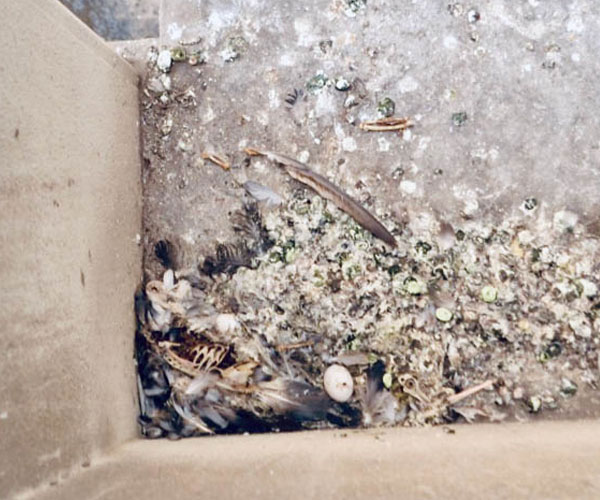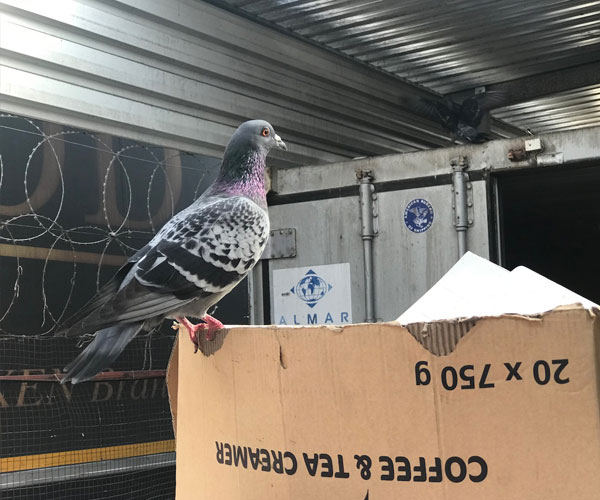ECOLOGY – Indian Mynahs live in large communities, sometimes numbering many thousands, returning to the same rossting areas every night. Their roosting, nesting and breeding takes place in comfortable, easily accessible locations such as well branched trees, loading bay roof areas, awnings and ventilation ducts.
LIVING HABITS – A mynah pair will produce three young, twice a year. These young will usually remain in the general vicinity of their parents’ nest until fully grown. Thereafter they will join the general community, thus adding to the bird population of the area. Besides their damaging, unsightly droppings and lice contamination, the mynah is an exceptionally noisy bird, especially when returning to roost in large numbers at dusk.

















